Are you standing in the paint aisle, overwhelmed by the endless choices and unsure what…

What does a circular economy for the paint industry look like?
Our planet is drowning in waste. Plastic pollution in our oceans. Landfills are overrun by all kinds of debris. Food waste. And yes, paint waste too. In fact, the UK alone creates 55 million litres of decorative paint waste every year.
For a waste-free world, we need to create and implement better systems and strategies to manage the input and output of resources. This is where a circular economy comes in.
In this blog, we’re exploring what a circular economy is, and different ways the paint industry can implement a circular model that reduces and eventually eliminates waste.
What is a circular economy?
A circular economy goes way beyond simply recycling—which is clearly not working. Circularity means that all resources used to make goods stay in a closed loop. No waste is created. Instead, everything is reused or repurposed.
“A circular economy is a systemic approach to economic development designed to benefit businesses, society, and the environment. In contrast to the ‘take-make-waste’ linear model, a circular economy is regenerative by design and aims to gradually decouple growth from the consumption of finite resources.” – Ellen McArthur Foundation.
Our current economy of taking, making, and wasting is harming not only our planet’s health but by default our own health too.
A circular economy is simply more sustainable and its ripple effects would positively impact biodiversity loss, water waste, and climate change.
The Linear Economy
In the economy we’re living right now, we take resources from our planet like oil, water, and trees. We use those raw materials to make products like paint, bottled water, and furniture. Then, after the products are used, they end up as waste in landfills, oceans, or burned – creating air pollution.
In this model, finite raw materials always end up as waste. Our planet simply doesn’t have the resources to continue on this path. A circular economy is necessary to reset the scale and restore balance between how much we take and how much we give back.
The paint industry, waste, and microplastics
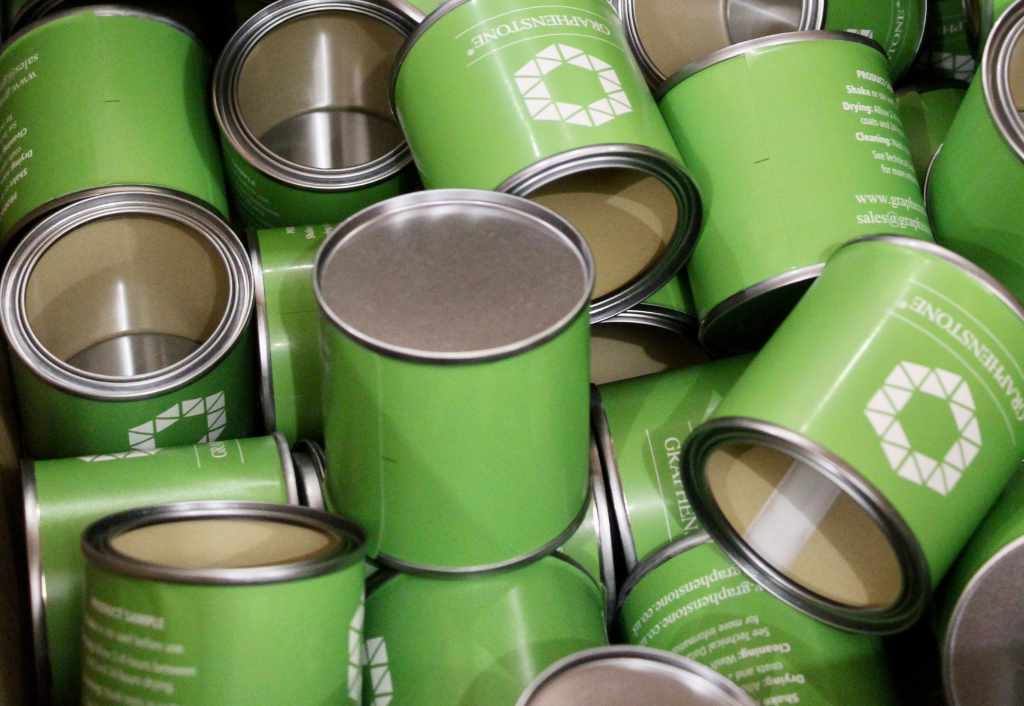
Like any other industry, the paint industry is also creating tonnes of waste every year. From liquid paint waste to plastic tins and lids, to microplastics in paint, there’s a lot that needs to be addressed to adopt a circular economy within the paint industry.
Boosting paint recycling
According to the British Coatings Federation, there are six cans of leftover paint sitting in a shed somewhere in each household in the UK. Of this leftover paint, 98% ends up as waste either incinerated or in a landfill.
This is a big opportunity for the paint industry to boost paint recycling. And efforts are already taking place. With 50+ million tins of paint stashed away in UK households, recycling is essential.
Plus, leftover paint can still be turned into high-quality paint again. And this process doesn’t need excessive resources.
An issue that keeps paint from being properly recycled is the lack of centres that accept liquid paint. Only 1 in 3 Waste Recycling Centres accept them, leaving households with no other option than to stash them or throw them away into the general waste stream.
Although we’re making positive progress through paint remanufacturing, only 2% of recovered waste paint is recycled. PaintCare, a branch of the British Coatings Federation aims to grow this number to 75% by 2030.
Plastic waste and ocean-bound microplastics

Another important area the paint industry needs to address to improve circularity is plastic—both inside paint and outside.
Most conventional paint uses petroleum-based based ingredients in their formulas (aka plastic). At the end of their life cycle, wasted paint is reaching our oceans and massively polluting them with microplastics.
Plus, most conventional paints are also packed in plastic, adding even more waste to the growing issue.
There’s a long road ahead to tackle paint recycling, plastic waste, and microplastics in the paint industry and create a more circular and sustainable model. But we’re taking important steps to contribute to a future free of paint waste.
Graphenstone’s role in a circular economy
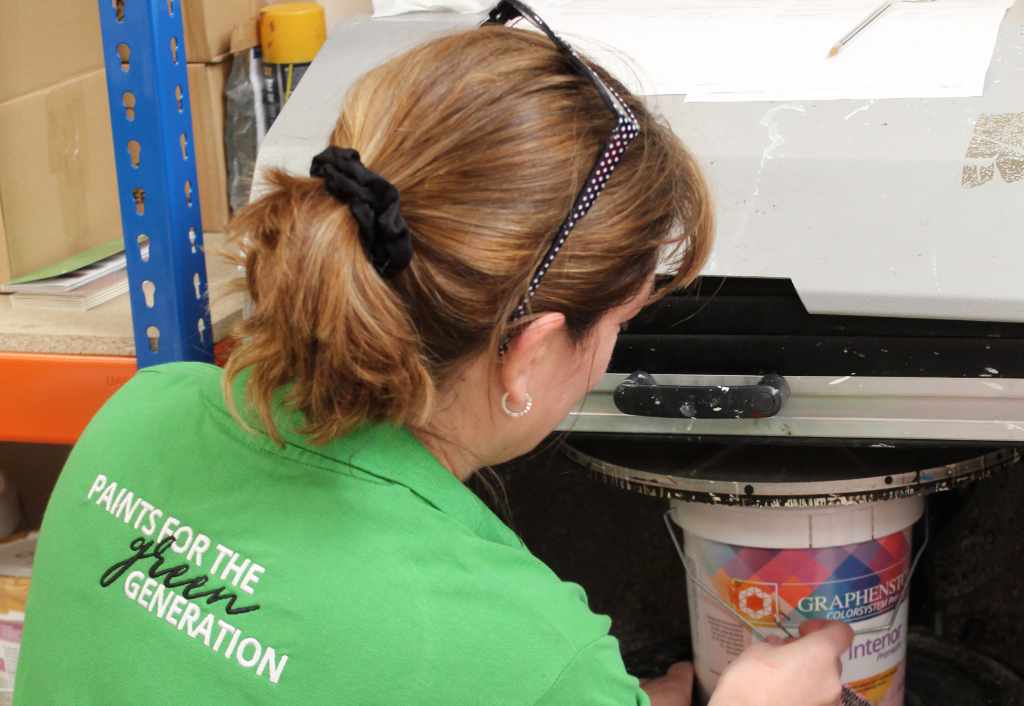
Circularity is possible in the paint industry. Although the industry in general needs to take giant leaps forward to adopt a more circular model, we’ve already taken the first steps to get there.
The tub-take-back scheme
Large commercial projects use vast amounts of paint, therefore creating lots of waste. To help tackle this issue, we run a tub-take-back program. We send a large skip bag to painting contractors to place their empty Graphenstone tubs. These tubs are then recycled into plastic building hoardings or plastic furniture.
Reducing waste and supporting local communities
If there’s any short-stock date product, we donate it all to local projects such as mural paintings, charities, school projects, and others. This tackles unnecessary waste and supports local communities.
A circular future for the paint industry
To create a circular model in the paint industry, we need to start adopting more sustainable practices that reduce plastic use, and paint waste, and improve recyclability. At Graphenstone, we’re committed to supporting and implementing these efforts.
We’re the single most certified green paint company out there. Our Cradle to Cradle Gold Standard certification shows our commitment to a circular future where no paint goes to waste. And as we grow, we continue taking steps forward that support a waste-free future.
Learn more about the certifications we hold and our commitment to sustainability here.

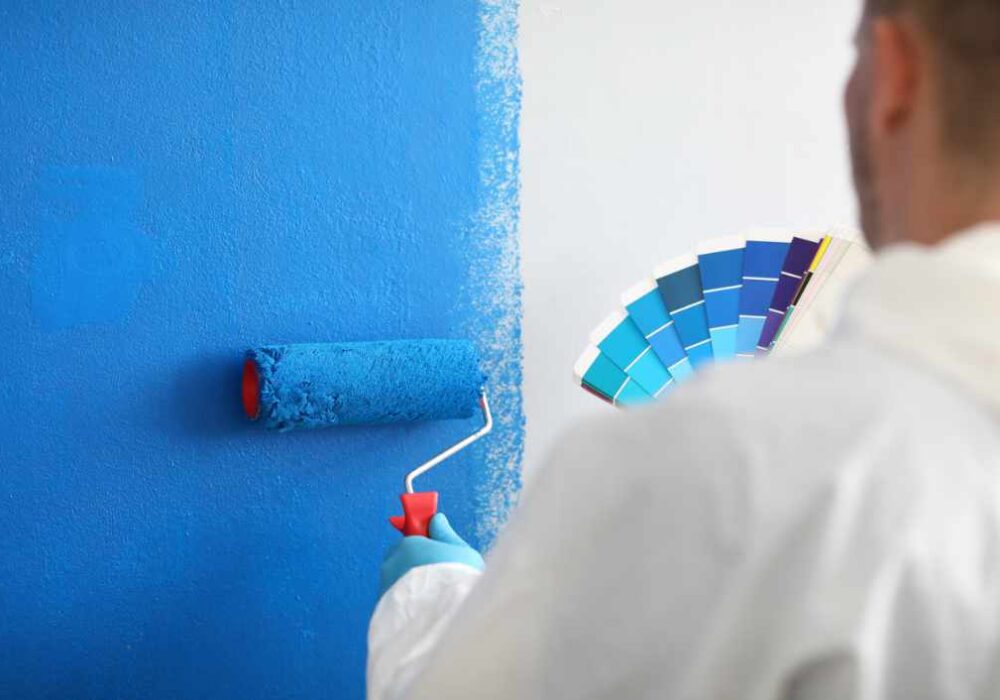
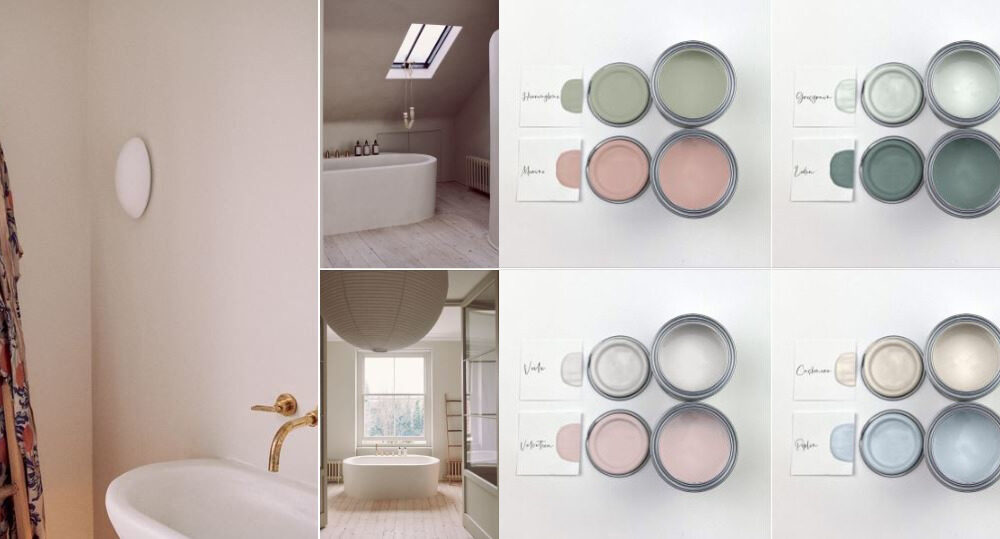

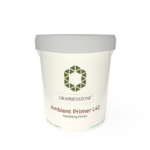

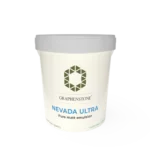
This Post Has 0 Comments